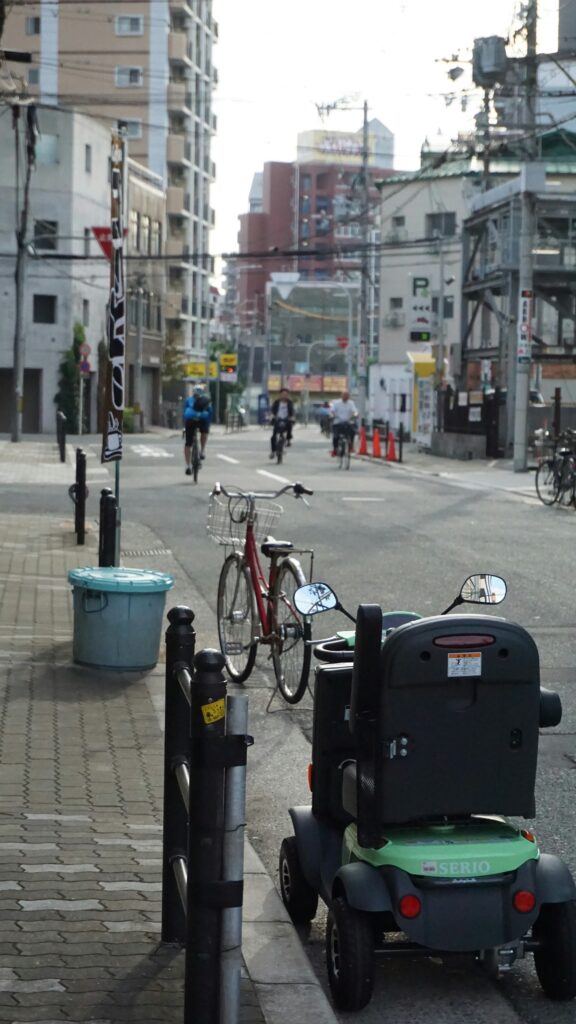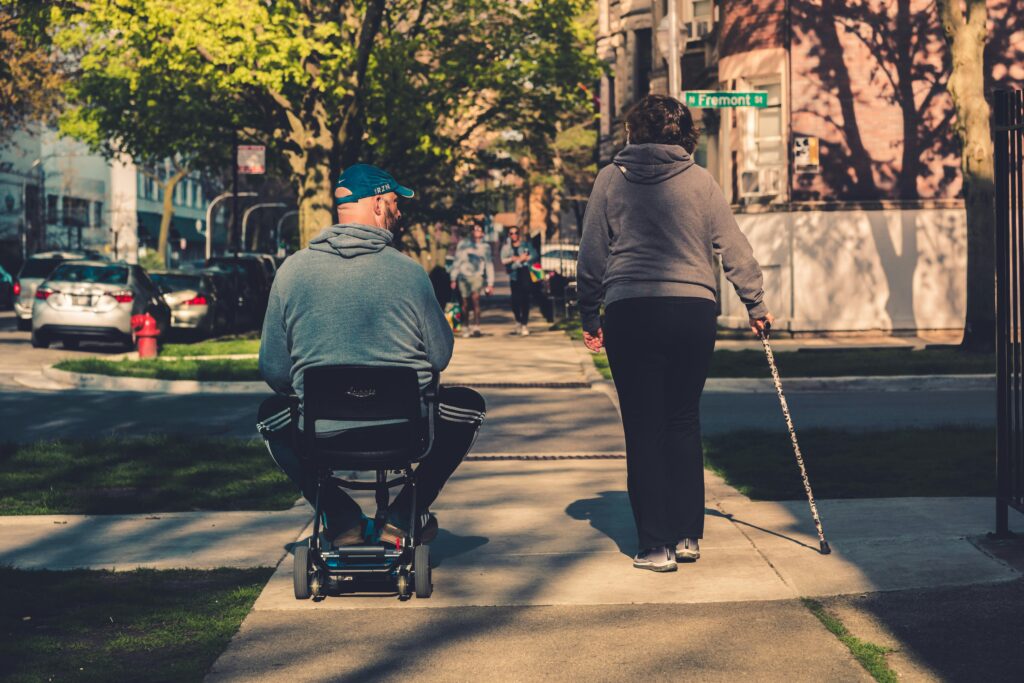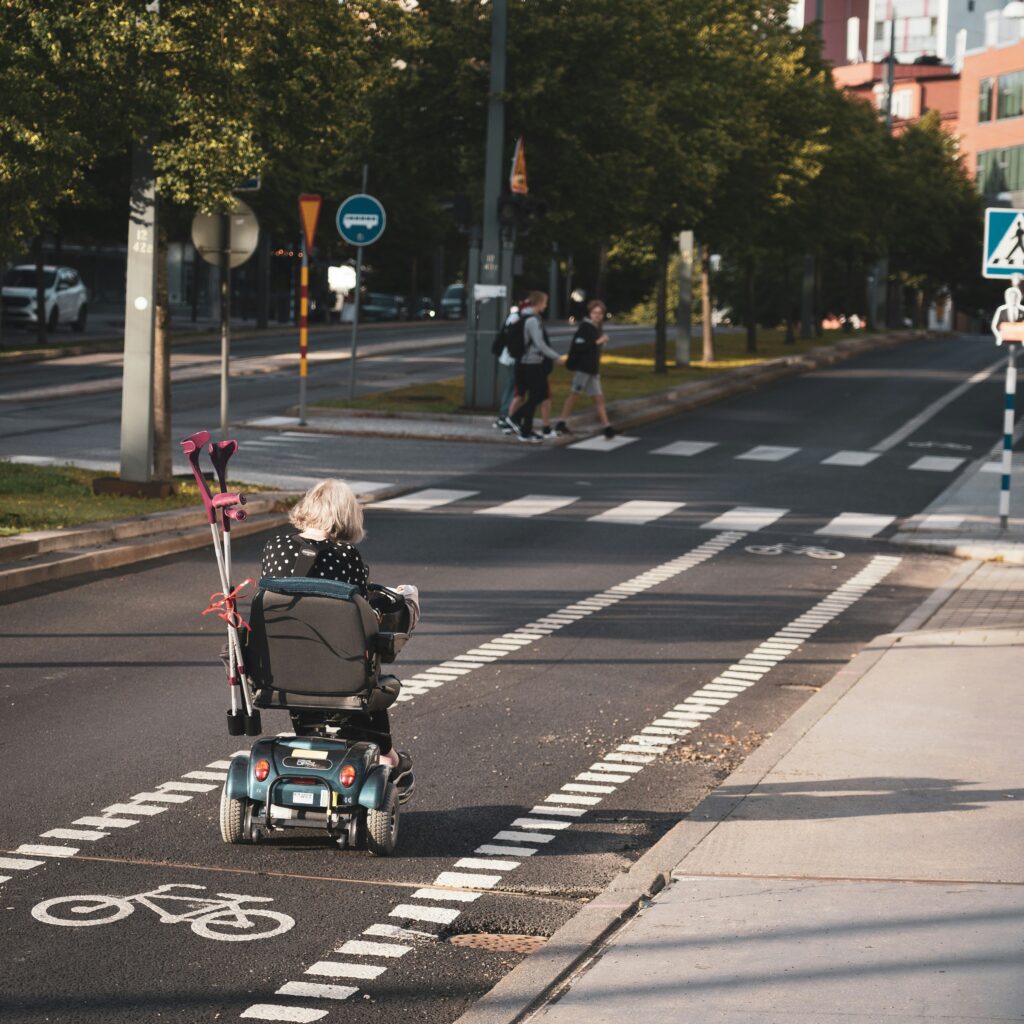A mobility scooter is a motorized device designed to assist individuals with limited mobility in navigating their surroundings with ease. Whether due to age, disability, or temporary injury, these scooters provide a practical solution for those who struggle to walk long distances or require extra support in their daily movements. With a simple and user-friendly design, mobility scooters are easy to operate and offer a sense of independence to their users.
Mobility scooters come in a variety of models, ranging from compact, portable options to larger, more robust designs suited for outdoor use. These scooters typically include features like comfortable seating, adjustable speed controls, and extended battery life, making them suitable for both indoor and outdoor activities. As a result, they are an essential tool for individuals seeking to maintain an active and fulfilling lifestyle, despite mobility challenges.
In recent years, advancement in technology has improved the functionality and versatility of mobility scooter, making them more accessible and tailored to the specific needs of different users. Whether you need one for occasional use or everyday mobility, the right mobility scooter can greatly enhance your freedom and quality of life.
Growth of Mobility Scooter users in the US
The growth in the number of mobility scooter users and the expected increase in mobility scooter prevalence creates a rising need to address this form of transportation from multiple perspectives. According to the US Census Bureau (2014), the Release Report CB14-218 for the years 2008–2012, 40% of people aged 65 and older have to contend with disabilities. Two-thirds have difficulty walking or climbing.
With the population over 65 in the US nearly doubling from 51 million in 2017 to 95 million by 2060 the number of older people that have to contend with mobility disabilities is expected to reach 24 million. This leads to an expected compound annual growth rate in the purchase of mobility scooters, worldwide, between 2020 and 2026 is expected to reach 7.3%, not accounting for COVID-19. The following research note addresses this need by examining the uniqueness of this transportation mode and by calling attention to possible impacts that the growth in mobility scooter use may have in three domains.
These include the impacts on those who adopt mobility scooters into their lifestyle, potential implications for urban and transportation planning, and impacts on enacting laws and regulations for the safety of those operating and riding mobility scooters, as well as those surrounding them.
Following the introduction, this paper consists of two parts. First, mobility scooters will be introduced, describing their uniqueness as a transportation mode. The legal aspects of mobility scooters will be explored, outlining current laws and regulations of relevance to mobility scooter usage from different parts of the world. Second, the knowledge gaps that exist in each of the three domains discussed above will be reviewed. These gaps need to be addressed regarding the growing number of older mobility scooter users.
Also read: 510+ Car Accessories You Need
Mobility Scooters and Their Use
A Mobility Scooter is a motorized device specifically designed to assist individuals who have difficulty walking or moving around due to mobility issues. At the heart of a Mobility Scooter is its ability to restore a sense of independence for people facing physical limitations. These scooters are used by the elderly, people with disabilities, or individuals recovering from injuries, helping them regain their freedom of movement in various environments.
The primary use of a Mobility Scooter is to provide transportation for short distances, both indoors and outdoors. Whether navigating through a shopping mall, visiting a park, or simply moving around at home, the Mobility Scooter offers a convenient and efficient way to get from point A to point B. Many models are designed with features that cater to comfort and ease, such as adjustable seats, handlebars, and simple controls, ensuring that operating a Mobility Scooter is straightforward and stress-free for users of all ages.
In addition to personal mobility, Mobility Scooters are often used for social activities, enabling users to remain active in their communities. Whether attending family gatherings, going to the local grocery store, or participating in social events, it empowers individuals to stay connected and involved. Their use extends beyond practicality; they provide a way for people to maintain their independence and improve their quality of life.
Laws and Regulations Regarding Mobility Scooters
When operating a Mobility Scooter, it’s essential to be aware of the laws and regulations designed to ensure safety for both the user and the public. In most regions, a Mobility Scooter is categorized as a personal mobility device, not a motor vehicle, which often means there’s no requirement for a driver’s license. However, local laws typically dictate where a Mobility Scooter can be used, such as sidewalks, parks, and pedestrian areas, but they may restrict scooter use on major roads or highways.
Many places impose speed limits on Mobility Scooters to promote safety. Generally, these devices are restricted to a maximum speed of 4 to 8 miles per hour, depending on whether the Mobility Scooter is being used on a footpath or a road. In some regions, scooters used in public areas must have certain safety features like lights and reflectors to ensure visibility during low-light conditions, adding an extra layer of security for both the Mobility Scooter user and pedestrians.
Additionally, some countries or states encourage or even require insurance for Mobility Scooter users. While not mandatory everywhere, having insurance can provide coverage in the event of an accident or damage caused by the Mobility Scooter. It’s important for users to be familiar with local regulations to make sure they are compliant and can safely enjoy the benefits of using a Mobility Scooter.
Three research perspectives derived from the growing use of mobility scooters
The remainder of this paper lays out a research agenda that is derived from the growth in the use of mobility scooters and covers the ways in which the growing use of mobility scooters may affect those who use them, the urban environments in which they live, and society at large.
Mobility Scooter Users
- Elderly individuals: Seniors who experience reduced mobility due to aging often use a mobility scooter to maintain their independence and continue engaging in everyday activities without needing assistance.
- People with disabilities: Those with physical disabilities that limit their ability to walk or stand for extended periods rely on a mobility scooter for easy and comfortable movement.
- Individuals recovering from injury or surgery: Temporary users of a mobility scooter may include those recovering from surgeries or injuries, as it allows them to navigate their environment while reducing strain during recovery.
- Individuals with chronic conditions: People with long-term conditions, such as arthritis or respiratory issues, that affect their endurance and mobility often find a mobility scooter useful for getting around with less physical effort.
- Active seniors wanting to maintain social engagement: Many older adults who want to stay active in their communities use mobility scooters to continue participating in social and recreational activities without limitations.

Urban Environments and Mobility Scooters
In urban environments, a mobility scooter offers a practical solution for individuals with limited mobility, providing them with the freedom to navigate bustling city streets and public spaces. Cities are typically dense with pedestrians, vehicles, and obstacles, making it essential for mobility scooter users to have access to sidewalks, bike lanes, and designated crossings that accommodate their needs. Many urban areas have begun to recognize the importance of accessible infrastructure for mobility scooters, incorporating ramps, widened sidewalks, and pedestrian-friendly zones into their planning.
The use of a mobility scooter in urban settings allows individuals to access essential services like grocery stores, healthcare facilities, and public transportation without relying on others. With the ability to maneuver in tight spaces, these scooters are ideal for navigating crowded areas such as shopping malls, parks, and markets. However, mobility scooter users in cities need to be aware of local regulations, as some areas may have restrictions on where scooters can be operated or require certain safety features, such as lights or horns.
Urban environments can present unique challenges for mobility scooter users, such as uneven sidewalks, traffic congestion, or lack of accessible public transportation. Despite these hurdles, cities are continuously improving their accessibility to support the growing number of mobility scooter users, making urban living more inclusive and manageable for individuals with mobility challenges.
The Urban Context of Parking a Mobility Scooter
Here are some key considerations for parking a mobility scooter in an urban context:
- Limited parking spaces: Urban areas often have limited space, and finding suitable, designated spots for parking a mobility scooter can be a challenge.
- Accessibility to ramps and entrances: When parking a mobility scooter in the city, users should aim for areas close to ramps or accessible building entrances to avoid obstacles.
- Shared pedestrian spaces: In densely populated urban environments, mobility scooters may need to be parked in shared spaces like sidewalks, so ensuring they don’t block pedestrian traffic is crucial.
- Secure locking options: Cities are prone to theft, making it important to park the mobility scooter in areas with secure locking options, such as near bike racks or in monitored parking zones.
- Public transport facilities: Urban environments may provide dedicated parking areas near public transport hubs, allowing mobility scooter users to easily transition between scooter and public transportation.
- Residential parking considerations: In apartment complexes or densely packed urban housing, designated mobility scooter parking may be available or needed in common areas like garages or lobbies.
Safety Considerations for Mobility Scooters
Safety is a key factor when using a mobility scooter, especially in busy or urban environments. To ensure safe use, users need to follow best practices and be aware of their surroundings. Firstly, users should always operate their mobility scooter at a safe speed, especially in crowded areas or on uneven surfaces, to avoid accidents or loss of control. Most mobility scooters are designed with speed limits, typically ranging from 4 to 8 miles per hour, which helps regulate safe driving in different settings.
Wearing bright or reflective clothing can improve visibility, especially in low-light conditions, while scooters equipped with lights, mirrors, and horns further enhance user safety. Additionally, when navigating roads or sidewalks, it’s essential for mobility scooter users to obey traffic signals, yield to pedestrians, and use designated crossings. Being mindful of the scooter’s battery life is also critical for safety—running out of power in the middle of the street or a busy area can pose a significant risk.
Lastly, regular maintenance of the mobility scooter ensures that it remains in optimal condition. Checking the tires, brakes, and battery frequently helps prevent breakdowns and ensures safe operation. By following these safety guidelines, mobility scooter users can confidently navigate their environments while minimizing the risk of accidents or injuries.
Topics that need to be addressed concerning safety include:
- Developing a better understanding of who can safely drive a mobility scooter.
- What impairments affect one’s capability of being a safe mobility scooter driver?
- How can training, user licensing, and vehicle inspection and registration be introduced in a way that is sustainable to existing licensing systems?
- What regulations regarding the use of mobility scooters need to be developed, and who should enforce these regulations?
- How would regulating mobility scooters endorse their use, receding, or expanding adoption?
- Development of crash testing protocols for MSs that take into consideration driver as well as pedestrian safety.
- How can MSs be designed and built to minimize injury and damage in the event of a collision?
Pros of using a Mobility Scooter
- Restores independence: A mobility scooter enables individuals with mobility challenges to regain independence by allowing them to move around without assistance, whether for daily errands or social engagements.
- Improves quality of life: By providing the freedom to travel longer distances without fatigue, a mobility scooter enhances the user’s ability to participate in activities, thus improving their overall quality of life.
- Reduces physical strain: For people with limited strength or endurance, a mobility scooter reduces the physical strain of walking or standing for long periods, allowing them to conserve energy for other tasks.
- Convenient for urban use: In urban settings, a mobility scooter provides a convenient way to navigate busy streets, shopping centers, and parks, making city life more accessible for those with mobility issues.
- Cost-effective transportation: A mobility scooter is a more affordable option compared to other motorized vehicles or constant reliance on taxis or public transport, offering a one-time investment that provides lasting benefits.
- Customizable features: Many mobility scooters come with customizable options, such as seat adjustments, added storage compartments, or enhanced suspension, making the experience more comfortable and personalized for the user.
- Eco-friendly: Since rechargeable batteries power mobility scooters, they are an environmentally friendly mode of transportation, producing zero emissions and helping to reduce the user’s carbon footprint.
- Accessible in public places: Most modern public buildings, parks, and transportation systems are designed with ramps and accessibility features, making it easier for mobility scooter users to get around in various locations.
- Increases social interaction: By allowing users to attend social events, visit friends, or participate in community activities without mobility concerns, a mobility scooter promotes social interaction and reduces feelings of isolation.
- Safe and easy to operate: Mobility scooters are generally designed to be easy to operate, with simple controls and built-in safety features like speed limiters, lights, and horns, making them suitable for a wide range of users, including the elderly.
- Adaptable for different environments: Whether navigating indoors, such as in shopping malls, or outdoors on various terrains, mobility scooters offer models designed to handle different surfaces, from smooth pavements to rougher paths.

Cons of using a Mobility Scooter
Here are the detailed cons of using a mobility scooter:
- Limited range: A mobility scooter relies on battery power, and the range is often limited to 10-30 miles per charge, depending on the model. This can restrict users from taking longer trips or require careful planning to ensure they don’t run out of power while away from home.
- Charging time: The battery of a mobility scooter usually takes several hours to fully charge, which can be inconvenient if the user needs to use it frequently. Running out of battery mid-journey can also cause inconvenience or safety issues if the user is far from a charging point.
- Restricted access in some areas: While most public spaces are becoming more accessible, there are still locations, especially in older buildings or outdoor spaces with uneven terrain, that may not accommodate a mobility scooter. Stairs, narrow doorways, and rough terrain can limit where users can go.
- Storage space required: A mobility scooter is larger than a wheelchair or walking aid, so users need adequate storage space at home or wherever they go. This can be a challenge in small apartments or homes without outdoor storage options like garages or sheds.
- Initial cost: While a mobility scooter can be a cost-effective alternative to constant reliance on taxis or public transport, the initial cost can be quite high, ranging from several hundred to several thousand dollars, depending on the model. This can be a barrier for some people, especially if insurance or government support isn’t available.
- Maintenance needs: Just like any vehicle, a mobility scooter requires regular maintenance, such as checking the tires, battery, and other components. This can be time-consuming and costly, especially if repairs are needed.
- Weight and portability: Many mobility scooters are bulky and heavy, making them difficult to transport, especially in smaller vehicles. Even foldable or travel-friendly models may still be challenging for some users to lift and store in cars, limiting their portability.
- Not suitable for all terrains: While some mobility scooters are designed for outdoor use, many models are best suited for flat, paved surfaces. Uneven ground, gravel, steep inclines, or rough outdoor terrain can be difficult or impossible to navigate with certain scooters, limiting their functionality.
- Slower speed: A mobility scooter is slower compared to other forms of transportation, with typical speeds ranging from 4 to 8 miles per hour. This can be an issue in urban environments where faster speeds are sometimes necessary for keeping up with traffic or pedestrians.
- Can be cumbersome in crowded areas: In busy urban spaces or tightly packed public places, a mobility scooter can be difficult to maneuver, and users may struggle to navigate through crowds or narrow pathways without causing delays or discomfort to others.
- Dependence on technology: A mobility scooter is a mechanical device, which means there’s always the possibility of technical malfunctions. If the scooter breaks down unexpectedly, the user may find themselves stranded and reliant on others for help.
- May reduce physical activity: While a mobility scooter is a great aid for those who need it, it may reduce physical activity for individuals still capable of walking shorter distances. Over-reliance on the scooter can potentially lead to decreased fitness or muscle strength.
- Vulnerability to theft: In public spaces, especially urban areas, a mobility scooter can be vulnerable to theft if left unattended or improperly secured, posing a risk to users who rely on it for their mobility needs.
Final Words
In summary, mobility scooters play a crucial role in enhancing the independence and quality of life of individuals with mobility challenges. These versatile and user-friendly devices are designed to cater to a wide range of needs, whether for everyday errands, leisurely outings, or maintaining an active lifestyle. With advancements in technology, today’s mobility scooters offer features such as increased speed, improved battery life, and enhanced safety measures, making them more accessible and enjoyable than ever before.
When choosing the right mobility scooter, consider factors such as your lifestyle, terrain, and specific mobility needs. Whether you opt for a compact model for easy transport or a robust scooter for outdoor adventures, it’s essential to select a scooter that aligns with your daily requirements and personal preferences.
We hope this article has provided you with valuable insights into mobility scooters and helped you understand their benefits and functionalities. If you or someone you know is considering a mobility scooter, we encourage you to explore the available options and consult with professionals to find the best fit.
Thank you for taking the time to read our article! We’d love to hear your thoughts and experiences regarding mobility scooters. Please feel free to share your comments or questions below at orangedip.com. Your insights can be incredibly helpful for others navigating similar journeys toward enhanced mobility and independence.


